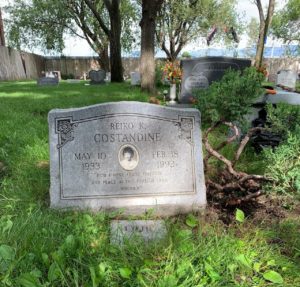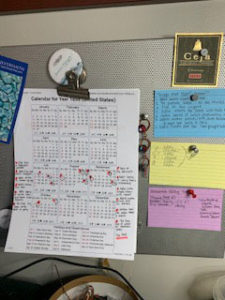I’d thought my road trip across two countries, ten states, and five Canadian provinces would spark my writing on the current work in progress and send the doldrums out the window (I seem to write far better and far more often when I’m on the road), but alas, that was not the case this trip. Oh, I tried – I guess I get an “A” for effort. If you want to catch a glimpse of my travels, feel free to click HERE.
I like driving, but it does have a downside. It takes up a lot of precious time. But as a writer, I look at the experience like this: I’m mining for new story lines and new inspiration. I’m meeting new personalities and reconnecting with old friends. I’m immersing myself in new settings.
Ah, but it would be really nice to travel in style. A self contained motor home like this one. Some of my hotel rooms were nice, but others were downright scary. They were all dog-friendly, but some charged extra for my pooch. In a couple of hotels, my pup ‘found’ things in our room – wrappers, candy, food, a condom. Dude, you should pay my dog for unearthing what housekeeping missed.
In the end, I came home after two and a half weeks, loaded up the classes I’d missed, and started to write with a vengeance. And I FINISHED! Yup, on September 30 with just hours to spare on my Novel in Nine class, when I finally typed The End at the end of 98K+ words.
There was the nearly teary goodbye to my Novel in Nine teacher, Michelle Richmond, and the rest of the class during the last video conference and subsequent group chats.
Now comes the harder part, and that’s editing. I’ve got a notebook full of the things I thought I’d missed, the things I wanted to include (I realized I had left out a key realization and now I’m wondering where the heck I should put it), and then the other things that popped up because some of my research sources steered me away from my wrong assumptions regarding late 19th Century Colorado. I’ll need to run the document in Smart Edit and fix all my overuses before I send it off for the next phase in my novel’s life.
I’d like to finish the first round edits before November, because…NaNoWriMo. I’m debating if I should start a new project or perhaps actually finish the last four or five of my November stories. I’m tired of leaving things half finished. They all need work, they all need those defining words The End. Still, even my hot messes of NaNoWriMo feels right somehow, even though the thought of tackling that chore feels daunting.
It’s all good.
It’s not just writing or the road trip or the unconditional love of my puppy. Life feels complete and even. There is a rhythm, in writing and in life (and even with the pup, who’s amazingly housebroken!) that is gentle. It all makes sense.
That’s where the success comes in. You don’t have to be a best selling author or rich or famous (although if the MegaMillions complies, I may get that motor home!) to feel contentment. Sure, you want all those things – everyone does.
The success doesn’t lie in the journey’s end – as much as I celebrated the completion of my novel with champagne and woohoos – no, the real success is in the journey.
Something to think about.
Safe travels.






 Image:
Image: 




